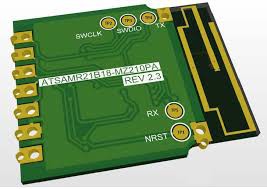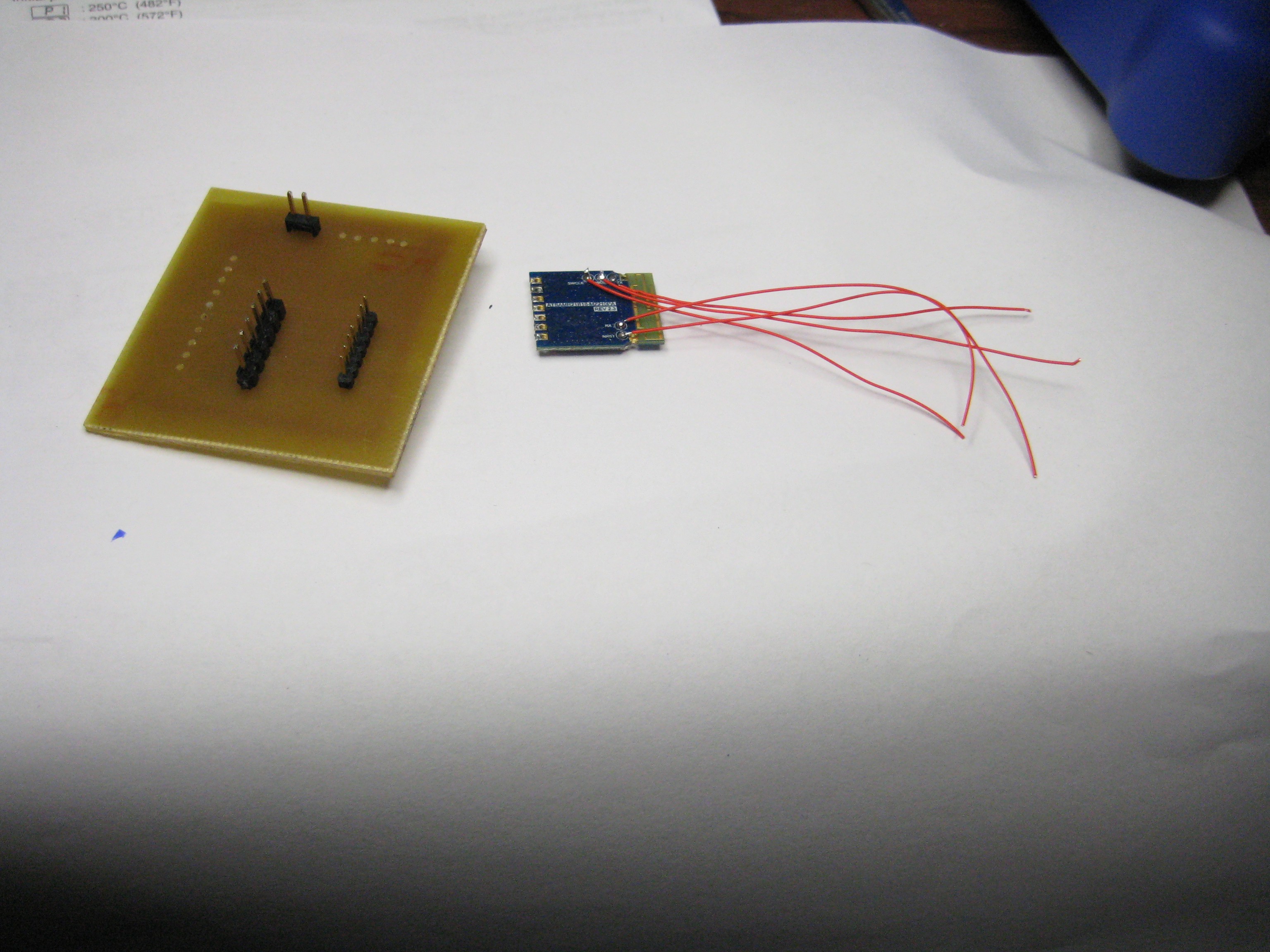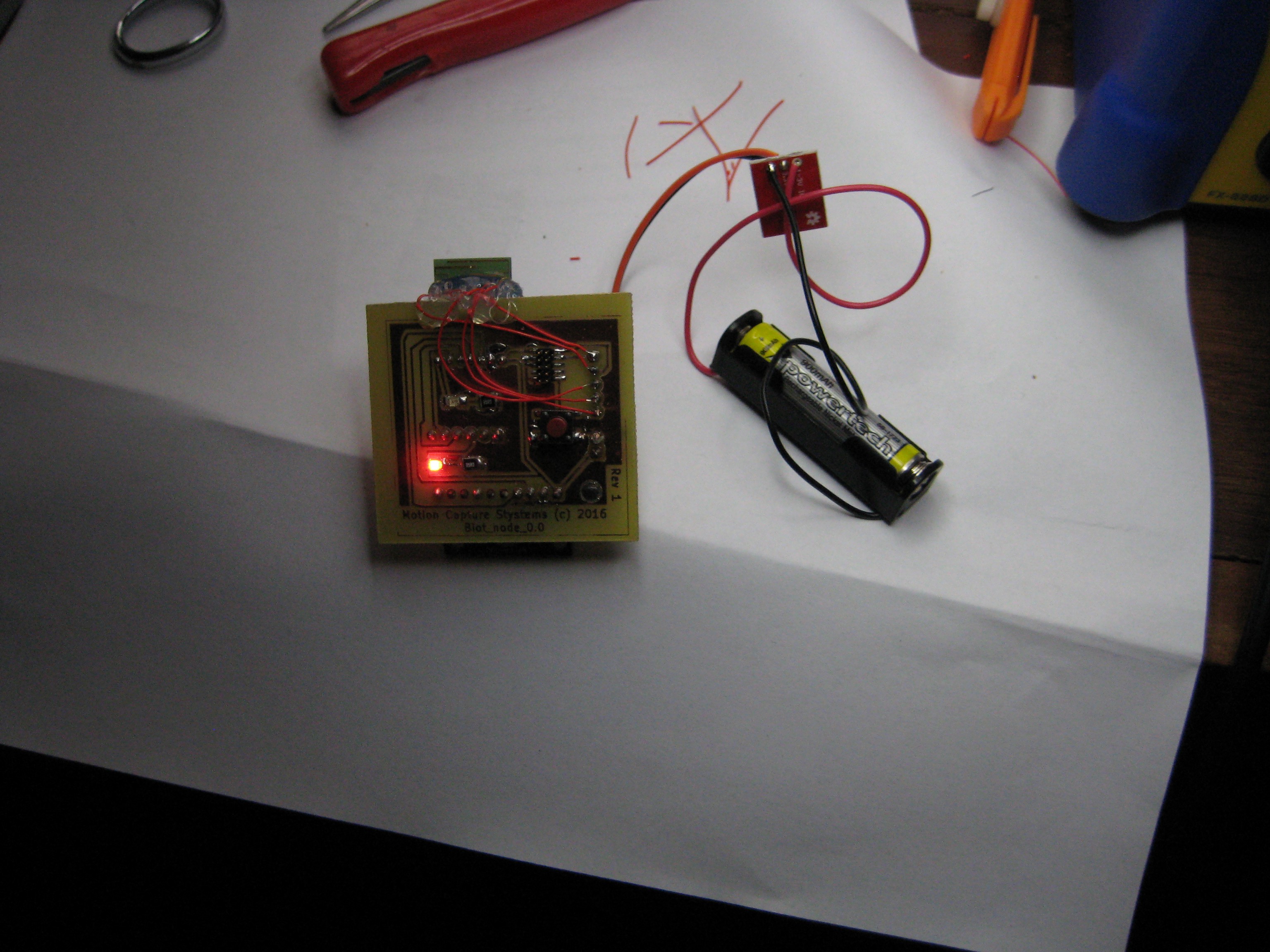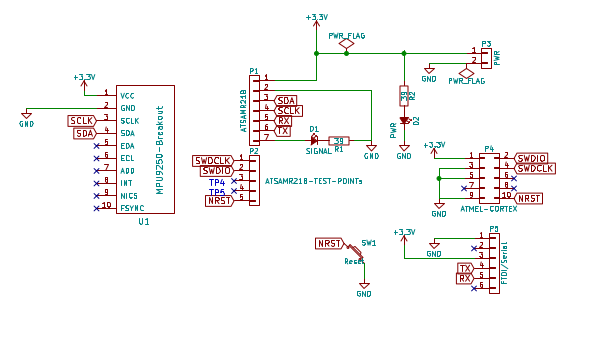So far I have been using ATMEL evaluation boards (the SAMR21-XPRO and ATSAMR21-ZLLK boards) to develop the IMU sensor nodes but I will need to move towards a small purpose built, battery powered module incorporating an IMU sensor and microcontroller.
I am still building up my design and fabrication skills and so decided my next step would be to move to an intermediate 'proof of concept' sensor node using easily assembled bits.
I took an "off the shelf" MPU9250 IMU breakout board (the MPU9250 appears to be superseding the MPU9150 that I have being using as sensors up until now), an ATMEL ATSAMR21B-MZ210PA microcontroller/wireless module, a Sparkfun 3.3v voltage upconvertor breakout board and made a small PCB that holds the IMU and microprocessor along with some leds to indicate power to the node and a 'heartbeat' from the microprocessor.
The node runs off an AAA cell and seems to work fine (after a few "learning experiences" making dodgy PCBs) . It is not my final design but will allow me to do some more experimentation and planning of the next steps.
The ATSAMR21B-MZ210PA has minimal pins available and to program it.


I need access to the RESET, SWDIO and SWCLK test points that are not exposed on the main module output pads but are available as test points on the underside of the board. I soldered some wire wrap wire to the test points so I could get access to them. This allows me to program the microcontroller using the Atmel 'Cortex' 10 pin header and Atmel-ICE programmer.

It appears to work!
The PCB is schematic is simple - it is mainly a carrier for the IMU and microcontroller modules:

The code that runs on the microcontroller and the PC communication and browser display applications are available at GitHub "Biotz" code.
You will need an edge router - I am using an ATSAMR21-ZLLK evaluation board and the code that runs on that is in the above repository (along with README info on how to set it up).
The code on the microcontroller runs under the RIOT-OS operating system. I have forked a copy of RIOT so I can add the boards I am using and functionality I need. It is not at the same coding standard as the 'real' RIOT-OS code - it is hacked enough to get it to work for the prototypes. My forked version is at hacked version of RIOT-OS.
Don't expect production ready code! It is really scrappy, feel free to use it but don't expect it to be robust! Also it is under currently active development so I may break things at times :(
My next steps:
1. make a few more of the 'proof of concept' nodes to see how well they interact with each other
2. start refining the node design into something closer to what I am envisioning - something quite small, lightweight and physically robust, that can easily be attached to the body.
 Jonathan Kelly
Jonathan Kelly
Discussions
Become a Hackaday.io Member
Create an account to leave a comment. Already have an account? Log In.